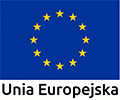Last week, as part of Polish-German cooperation, employees of the Treblinka Museum, headed by Director Edward Kopówka, visited Saxony-Anhalt, a state of Germany.
On November 15, 2022, in Magdeburg, the delegation met with representatives of the Federal Agency for Civic Education Saxony-Anhalt represented by its Director Maik Reichel. During the meeting, knowledge was shared on how to educate young people and how to create exhibitions. The details of future cooperation between the Institutions were also discussed, which is particularly important for the Treblinka Museum, due to the future construction of an exhibition and educational facility on the premises of the Treblinka Museum. After the meeting the delegation moved to Halberstadt, where they visited the Moses Mendelssohn Academy. Most of the Jews from this town were murdered in the Treblinka Extermination Camp during World War II.
In the evening, during a gala dinner at the einewelt house in Magdeburg, the Director Maik Reichel and Dr. Edward Sułek – a long time guide and translator of German groups visiting the Treblinka Memorial, were honoured with the “Meritorious for the Treblinka Museum” medals. The Medals were awarded in gratitude for their commitment and long-term cooperation.
On Wednesday, November 16, 2022, the delegation visited the Dr. Otto Schlein Vocational School in Magdeburg. The students of this school periodically visit the Treblinka Museum. The ceremony began with artistic performances by young people. After welcoming the guests, the ceremony of awarding the “Meritorious for the Treblinka Museum” medal took place. Medals were awarded to the Dr. Otto Schelin Vocational School, Peter Wetzel and Katja Behrens – the organisers and companions of German youth trips to Treblinka.
On that day, employees of the Treblinka Museum also visited the Memorial Site in Gardelegen, dedicated to commemorating over 1,000 people murdered in a barn, mostly Poles. The massacre took place on April 13, 1945. The Germans, for fear of the approaching American soldiers, decided to kill the prisoners escorted in the death marches, previously evacuated from concentration camps. The victims were gathered in a barn belonging to the Isenschnibbe estate, located on the suburban area of the city. Then, the barn was set on fire. The escaping people were shot, only a few managed to survive. The genocide was discovered the next day by American troops, who prevented the obliteration of the traces of the crime. General Frank A. Keating, the commander-in-chief of the 102nd US Infantry Division, ordered the inhabitants of Gardelegen to exhume the corpses of the murdered, and gave them a proper burial in separate graves in the cemetery located next to it. Nowadays, there is also a new museum building erected in this area dedicated to the Gardelegen massacre.
On Thursday, November 17, 2022, the delegation visited the “Roter Ochse” Memorial Site in Halle (Saale). From the autumn of 1942 until the end of World War II, 549 people, opponents of Nazism from various European countries and from Tunisia, were sentenced to death there by order of civil courts and the jurisdiction of the Wehrmacht. Among the murdered was a Polish woman Krystyna Wituska – a soldier of the Home Army. She was accidentally arrested in October 1942 and imprisoned in Pawiak, after the investigation on Aleja Szucha (Szucha Avenue) she was transported to Berlin. The investigation was completed in April 1943 and she was charged with espionage and complicity in the crime of high treason. The court sentenced Wituska to death by guillotine beheading. The sentence was carried out on June 26, 1944. She was buried in a mass grave at the cemetery in Getraudenfriedhof in Halle.





